Death comes even to those for whom dying provides a living.
“And where,” I hear you ask, “are the eternal resting places of these people, who escort us to ‘the Undiscovered Country from whose bourn no traveler returns’?”
Glad you asked.
George Gause, of course, is the best known of Fort Worth’s early undertakers. He died December 18, 1938 in the Quality Hill home that was both his home and his funeral parlor.

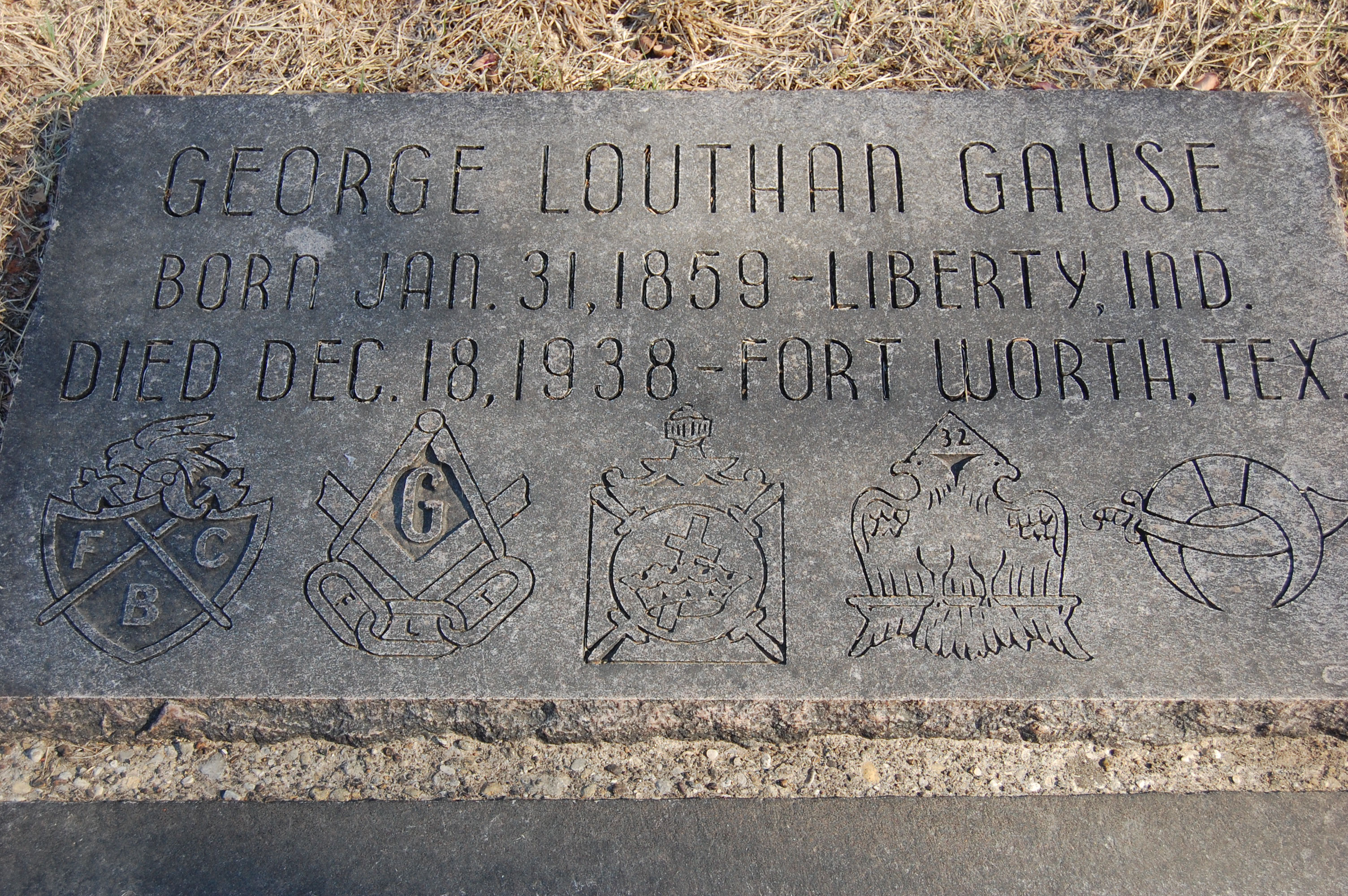 George Gause is buried in Oakwood Cemetery not far from John Peter Smith, who donated land for both Oakwood and Emanuel Hebrew Rest cemeteries. (Photos show the Gause family monument and George Gause’s tombstone.)
George Gause is buried in Oakwood Cemetery not far from John Peter Smith, who donated land for both Oakwood and Emanuel Hebrew Rest cemeteries. (Photos show the Gause family monument and George Gause’s tombstone.)
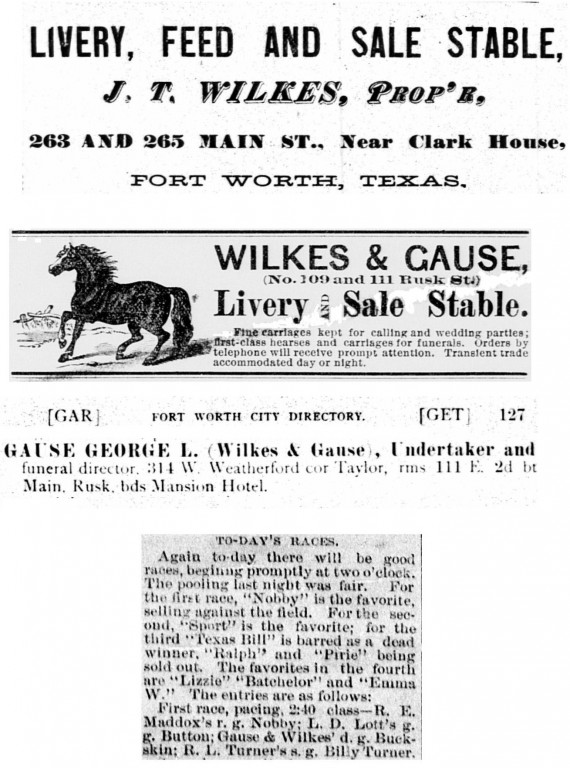 But perhaps the first of our early undertakers to need an undertaker himself was John T. Wilkes, an early partner of Gause. In the second half of the nineteenth century, because livery stables provided horses, hearses, and carriages for funeral processions, livery stables often branched out into undertaking. And so it was with Gause and Wilkes: Both men began as livery stable owners and then partnered in a livery stable-undertaking business. Both men were hard-core horsemen: They raced horses at the driving park and were members (along with Jim Courtright and future Police Chief James Maddox) of the fire department’s horse-drawn M. T. Johnson Hook and Ladder Company No. 1.
But perhaps the first of our early undertakers to need an undertaker himself was John T. Wilkes, an early partner of Gause. In the second half of the nineteenth century, because livery stables provided horses, hearses, and carriages for funeral processions, livery stables often branched out into undertaking. And so it was with Gause and Wilkes: Both men began as livery stable owners and then partnered in a livery stable-undertaking business. Both men were hard-core horsemen: They raced horses at the driving park and were members (along with Jim Courtright and future Police Chief James Maddox) of the fire department’s horse-drawn M. T. Johnson Hook and Ladder Company No. 1.
 Ironically, undertaker Wilkes is buried without a headstone. It has disappeared. He is buried in Pioneers Rest next to his brother Richard (himself a fireman), who died in 1887. John T. Wilkes died in 1894. He was living over the funeral home of former partner George Gause. Note the weathered skull and crossbones. Clips are from the April 18, 1887 and May 31, 1894 Gazette.
Ironically, undertaker Wilkes is buried without a headstone. It has disappeared. He is buried in Pioneers Rest next to his brother Richard (himself a fireman), who died in 1887. John T. Wilkes died in 1894. He was living over the funeral home of former partner George Gause. Note the weathered skull and crossbones. Clips are from the April 18, 1887 and May 31, 1894 Gazette.
Another early partner of George Gause was Samuel David Shannon, who had worked for Gause’s Palace livery stable. In 1906 Shannon was an alderman of the city of North Fort Worth and working at the Swift packing plant when he and Gause started North Fort Worth Undertaking Company in Sam Rosen’s Ye Rosen Inn on North Main Street. In 1931 Shannon and son Oliver would buy Fort Worth Undertaking Company, located at Lamar and 10th streets. S. D. Shannon’s company continues as Shannon funeral homes. Clip is from the March 3, 1907 Telegram.
Samuel David Shannon, a resident of Grand Avenue, was a state representative and held positions with the city of North Fort Worth and Tarrant County. He died in 1946.
He is buried in Mount Olivet Cemetery.
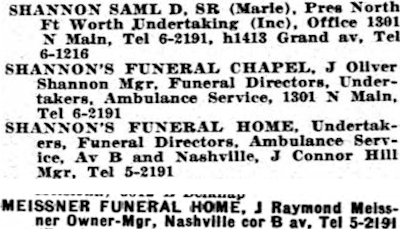 By 1935 S. D. Shannon had a funeral home on the North Side and another on the East Side at Nashville Avenue and Avenue B.
By 1935 S. D. Shannon had a funeral home on the North Side and another on the East Side at Nashville Avenue and Avenue B.
James Raymond Meissner worked for Shannon on the North Side and then on the East Side. About 1945 Meissner bought Shannon’s East Side location and operated it as Meissner Funeral Home for more than thirty years. Clips are from the 1935 and 1945 city directories. Ad is from the 1938 Polytechnic High School yearbook.
In 1976 the Meissner funeral home was the festival center for a vigil for Queen Rosa of the Evans gypsy (Roma) clan. Several members of the Evans and Mitchell families are buried at Shannon Rose Hill Cemetery.
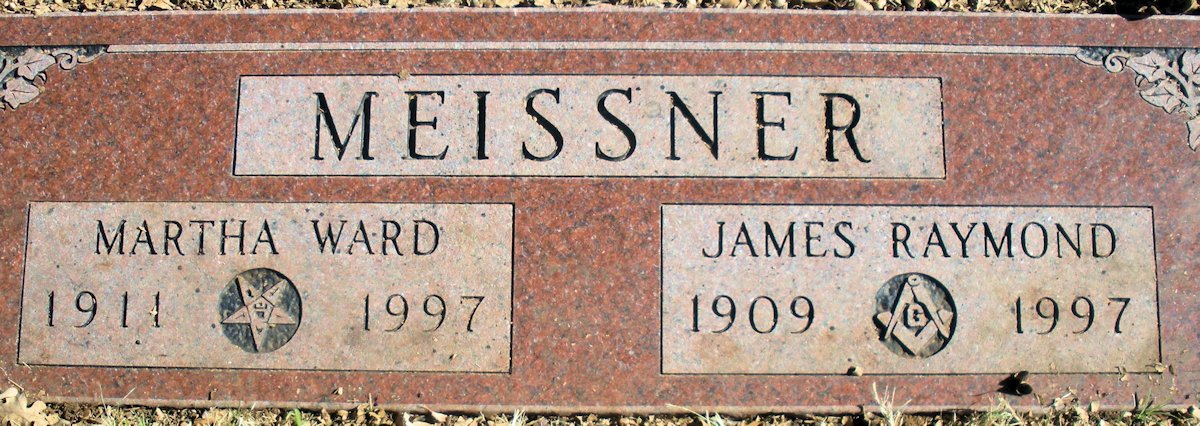 Meissner was one of the local undertakers who went to New London in east Texas in 1937 to help after the school explosion that killed an estimated 311 people, mostly children. When his own end came, James Raymond Meissner gave his business to his former employer: Meissner is buried in Shannon Rose Hill.
Meissner was one of the local undertakers who went to New London in east Texas in 1937 to help after the school explosion that killed an estimated 311 people, mostly children. When his own end came, James Raymond Meissner gave his business to his former employer: Meissner is buried in Shannon Rose Hill.
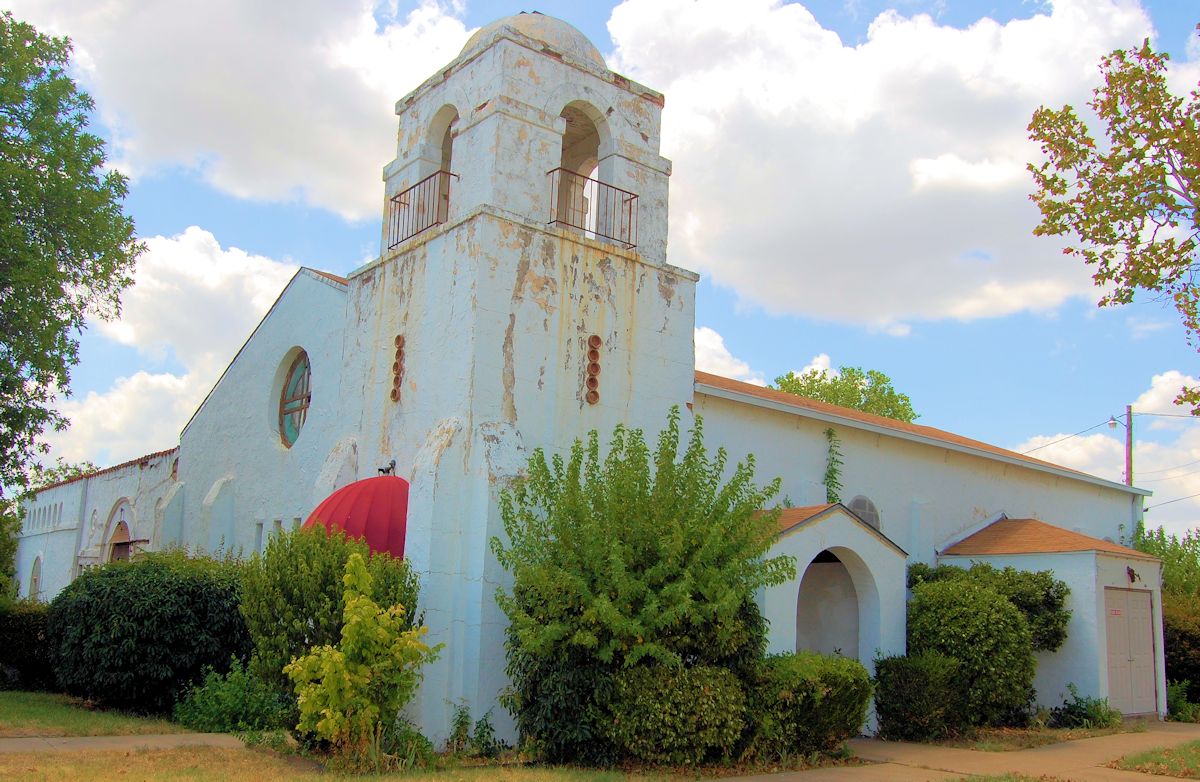 The 1937 mission-style building that housed Meissner’s funeral home looks as if its organ should continuously play the hymn “Hotel California.”
The 1937 mission-style building that housed Meissner’s funeral home looks as if its organ should continuously play the hymn “Hotel California.”
Update: A new owner has restored the building as the Chandelier Ballroom. Quite a change of function for the old building.
 George Gause’s best-known partner, of course, was John Morton Ware, who married Gause’s daughter Louise and was added to the company name about 1923. Ware is buried in Greenwood Cemetery. Clips are from the 1941 city directory and May 28, 1955 Dallas Morning News.
George Gause’s best-known partner, of course, was John Morton Ware, who married Gause’s daughter Louise and was added to the company name about 1923. Ware is buried in Greenwood Cemetery. Clips are from the 1941 city directory and May 28, 1955 Dallas Morning News.
 Just as livery stables branched out into undertaking, so did other businesses that had a natural connection. Carpenters, for example, made coffins and thus branched out. And furniture stores that sold coffins and other funeral trappings sometimes branched out into undertaking. So it was with Fakes & Co. Brothers William and Bailey Fakes were born in Tennessee, moved to Texas, and opened their furniture store in Fort Worth in 1876. Clips are from the 1878 and 1885 city directories.
Just as livery stables branched out into undertaking, so did other businesses that had a natural connection. Carpenters, for example, made coffins and thus branched out. And furniture stores that sold coffins and other funeral trappings sometimes branched out into undertaking. So it was with Fakes & Co. Brothers William and Bailey Fakes were born in Tennessee, moved to Texas, and opened their furniture store in Fort Worth in 1876. Clips are from the 1878 and 1885 city directories.
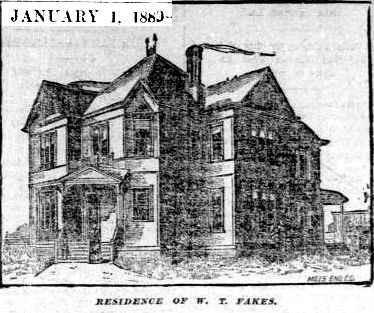 William T. Fakes in 1889 lived in this house on Summit Avenue on Quality Hill.
William T. Fakes in 1889 lived in this house on Summit Avenue on Quality Hill.
 In the mid-1890s both Fakes brothers moved to Dallas. But when Bailey Fakes died in 1895 he was buried in Fort Worth’s Oakwood Cemetery. William Fakes died in 1909 and is buried in Oakland Cemetery in Dallas. Clips are from the October 3, 1895 Gazette and December 20, 1909 Dallas Morning News.
In the mid-1890s both Fakes brothers moved to Dallas. But when Bailey Fakes died in 1895 he was buried in Fort Worth’s Oakwood Cemetery. William Fakes died in 1909 and is buried in Oakland Cemetery in Dallas. Clips are from the October 3, 1895 Gazette and December 20, 1909 Dallas Morning News.
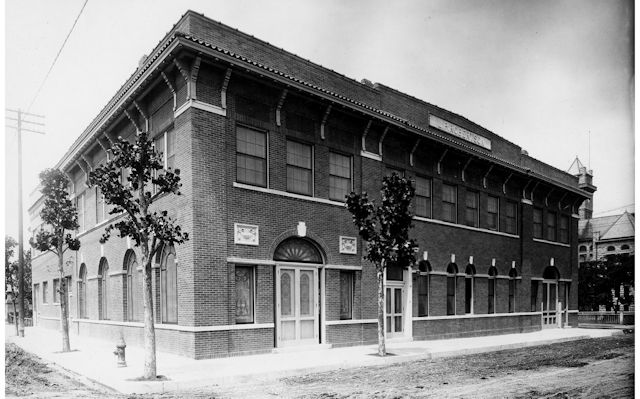 Louis P. Robertson worked for the Fakes brothers for nine years. Then in 1881 he bought the brothers’ undertaking department and established L. P. Robertson Undertaker. Photo shows Robertson’s funeral home at Taylor and 10th streets (see tower of 1893 city hall on right edge). This building would receive the bodies of aviators Vernon Castle in 1918 and Ormer Locklear in 1920. Robertson’s funeral home would evolve into today’s Robertson-Mueller-Harper. (Photo from University of Texas at Arlington Library.)
Louis P. Robertson worked for the Fakes brothers for nine years. Then in 1881 he bought the brothers’ undertaking department and established L. P. Robertson Undertaker. Photo shows Robertson’s funeral home at Taylor and 10th streets (see tower of 1893 city hall on right edge). This building would receive the bodies of aviators Vernon Castle in 1918 and Ormer Locklear in 1920. Robertson’s funeral home would evolve into today’s Robertson-Mueller-Harper. (Photo from University of Texas at Arlington Library.)
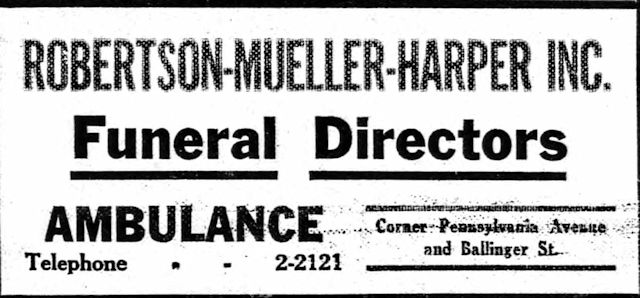
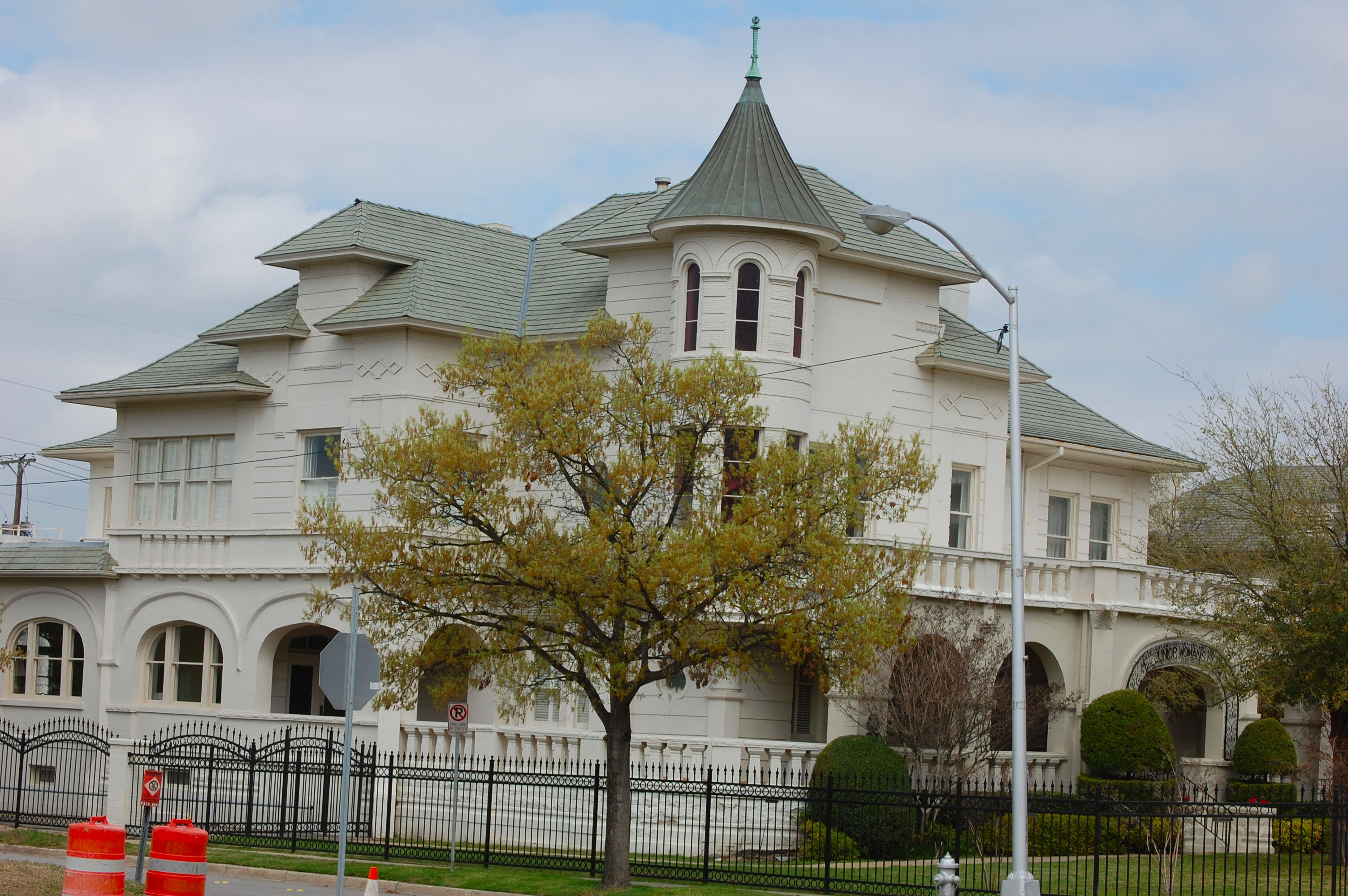 In 1929 Robertson-Mueller-Harper would buy the former home of real estate millionaire James F. Moore on Pennsylvania Avenue at Ballinger Street in Quality Hill.
In 1929 Robertson-Mueller-Harper would buy the former home of real estate millionaire James F. Moore on Pennsylvania Avenue at Ballinger Street in Quality Hill.
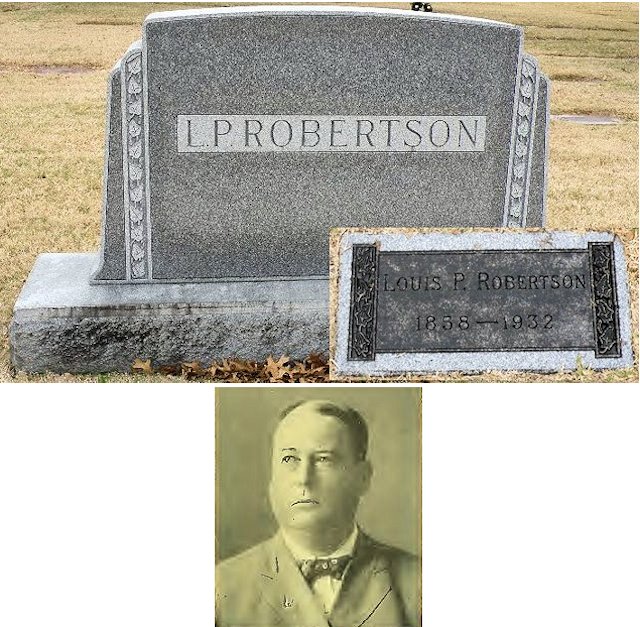 Louis P. Robertson is buried in Greenwood Cemetery across the drive from William J. Bailey. “And who,” you ask, “was William J. Bailey?” Read on:
Louis P. Robertson is buried in Greenwood Cemetery across the drive from William J. Bailey. “And who,” you ask, “was William J. Bailey?” Read on:
When Those Who Bury the Dead Are Dead (Part 2)
Posts About Cemeteries






Thank You, very interesting piece. One correction however:
S.D. Shannon was the father of Oliver Shannon, not the brother as stated. Oliver Shannon was my grandfather. My father is Jack Shannon.
Thank you. I have made that correction.
nicely done, thank you for the history
my mother Phyllis Moore, worked for Morton Gause for 30 years as his personal secretary. i remember him coming to our home in 1952 to interview her and give her a typing test. fond memories
Thank you, Michael. Those folks were a big part of our past.
Thank you Mike Nichols for preserving history. I have found your site in doing research for a Funeral Home in the Polytechnic Area, the Shannon-Meissner Funeral Home. I am working on rehabing/restoring that wonderful building, which was scheduled to be razed last year. Could you reach out to me directly if possible with any further information or photos you may know of. Even knowledge of stories from locals of the area, something I could follow up on. As an architectural preservationist and a kid from the 1960s west fort worth, I can not begin to show my appreciation of your efforts. Thank you!
Thanks, Jeff. And thank you for saving that grand old building. As for photos, even the Historical Resources Survey book for the East Side has a photo of only the garage, not the main building. The Star-Telegram and W. D. Smith archives at UTA Library might have something. I could not find a mention of the building being planned, started, under construction, or completed in the S-T. When I played Little League and Pony League baseball on the East Side, at some point Meissner Funeral Home sponsored a team because one year my uniform had “Meissner Funeral Home” embroidered on the back of the jersey.
I enjoyed this very much.
I would really like to know more about the gypsy clan mentioned in this article.
Thanks, Genevieve. The clip about the Evans clan is not really relevant to my topic, but it was too interesting to resist. One summer Meissner Funeral Home sponsored my Little League team, and I have always had an fondness for the business and the building.
Really fascinating history of Fort Worth’s undertaking industry. As a boy, I used to play with neighborhood kids, William and Wallace (Buck) McLean at the home of their locally famous grandparent, Mr William Pinckney McLean residing at 1500 Eighth Ave, now the location of Robertson-Mueller-Harper. For a number of years in the 1930s my next door neighbor at 1416 Hurley St was Grover C Cole, Jr of Harveson & Cole
Thanks, George. More to come next Sunday.
Hi Mike. You sure covered a lot of ground. No wonder you were so exhausted the other day. Good post. Those names were somewhat familiar to me growing up in Ft. Worth. I used to tell Chris when he was young and we would pass a cemetery that people were dying to be there. He stopped laughing, but I never did.
Thanks. And that’s just Part 1! Fort Worth may have more folks underground than above ground.